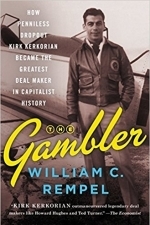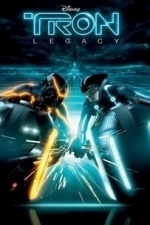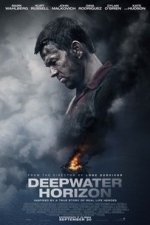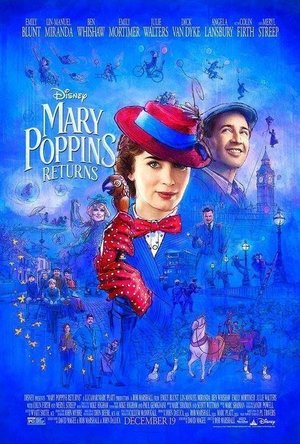Search
MaryAnn (14 KP) rated CSB Worldview Study Bible in Books
Nov 4, 2019
The CSB Worldview Study Bible features extensive worldview study notes and articles by notable Christian scholars to help Christians better understand the grand narrative and flow of Scripture within the biblical framework from which we are called to view reality and make sense of life and the world. Guided by general editors David S. Dockery and Trevin K. Wax, this Bible is an invaluable resource and study tool that will help you to discuss, defend, and clearly share with others the truth, hope, and practical compatibility of Christianity in everyday life.
Features include:
Extensive worldview study notes
Over 130 articles by notable Christian scholars
Center-column references
Smyth-sewn binding
Presentation page
Two ribbon markers
Two-piece gift box, and more
General Editors: David S. Dockery and Trevin Wax
Associate Editors: Constantine R. Campbell, E. Ray Clendenen, Eric J. Tully
Contributors include: David S. Dockery, Trevin K. Wax, Ray Van Neste, John Stonestreet, Ted Cabal, Darrell L. Bock, Mary J. Sharp, Carl R. Trueman, Bruce Riley Ashford, R. Albert Mohler Jr., William A. Dembski, Preben Vang, David K. Naugle, Jennifer A. Marshall, Aida Besancon Spencer, Paul Copan, Robert Smith Jr., Douglas Groothuis, Russell D. Moore, Mark A. Noll, Timothy George, Carla D. Sanderson, Kevin Smith, Gregory B. Forster, Choon Sam Fong, and more.
The CSB Worldview Study Bible features the highly readable, highly reliable text of the Christian Standard Bible (CSB). The CSB stays as literal as possible to the Bibles original meaning without sacrificing clarity, making it easier to engage with Scriptures life-transforming message and to share it with others.
This is a wonderful Bible that not only gives us God's word but teaches through credible editors about the Christians view of the world. There are articles that show us the Biblical view of that issue; such a: the Biblical view of music, Personal Finances. Ther is an article on how Christians should relate to the government along with various other interesting articles.
This is a great study Bible for new believers, for discipling, for those interested in how God's word relates to issues around us today. How we as Christians should respond to a world that is turning against Christians.
This is a beautiful Bible, that is easy to read and has full-color maps. This will be a great addition to anyone's library.
CSB Worldview Study Bible
I received this book free from the publisher. I was not required to write a positive review and the opinions I have expressed are my own. I am disclosing this in accordance with the Federal Trade Commissions 16 CFR, Part 255 : Guides Concerning the Use of Endorsements and Testimonials in Advertising.
Features include:
Extensive worldview study notes
Over 130 articles by notable Christian scholars
Center-column references
Smyth-sewn binding
Presentation page
Two ribbon markers
Two-piece gift box, and more
General Editors: David S. Dockery and Trevin Wax
Associate Editors: Constantine R. Campbell, E. Ray Clendenen, Eric J. Tully
Contributors include: David S. Dockery, Trevin K. Wax, Ray Van Neste, John Stonestreet, Ted Cabal, Darrell L. Bock, Mary J. Sharp, Carl R. Trueman, Bruce Riley Ashford, R. Albert Mohler Jr., William A. Dembski, Preben Vang, David K. Naugle, Jennifer A. Marshall, Aida Besancon Spencer, Paul Copan, Robert Smith Jr., Douglas Groothuis, Russell D. Moore, Mark A. Noll, Timothy George, Carla D. Sanderson, Kevin Smith, Gregory B. Forster, Choon Sam Fong, and more.
The CSB Worldview Study Bible features the highly readable, highly reliable text of the Christian Standard Bible (CSB). The CSB stays as literal as possible to the Bibles original meaning without sacrificing clarity, making it easier to engage with Scriptures life-transforming message and to share it with others.
This is a wonderful Bible that not only gives us God's word but teaches through credible editors about the Christians view of the world. There are articles that show us the Biblical view of that issue; such a: the Biblical view of music, Personal Finances. Ther is an article on how Christians should relate to the government along with various other interesting articles.
This is a great study Bible for new believers, for discipling, for those interested in how God's word relates to issues around us today. How we as Christians should respond to a world that is turning against Christians.
This is a beautiful Bible, that is easy to read and has full-color maps. This will be a great addition to anyone's library.
CSB Worldview Study Bible
I received this book free from the publisher. I was not required to write a positive review and the opinions I have expressed are my own. I am disclosing this in accordance with the Federal Trade Commissions 16 CFR, Part 255 : Guides Concerning the Use of Endorsements and Testimonials in Advertising.
Jesters_folly (230 KP) rated Tron Legacy (2010) in Movies
Nov 20, 2020
Contains spoilers, click to show
Ok this was actually good which is a bit surprising as there have been a few sequels to older films released over the past few years and they haven't all be great, not that they haven't necessarily been bad but, depending on how they continuing they have been a bit problematic. Either by using now outdated concepts or trying to to match modern political standards and missing the mark, Ghostbusters I'm looking at you. Tron: Legacy goes down the path of of handing the franchise over to the next generation in a similar manner to Bill and Ted Face the Music and I think Tron does it better.
I'll start by saying that Tron: Legacy is not as original or forward thinking as it's predecessor but that is to be expected. The original had Ideas that were slightly before it's time which i talk about in my review of that film. Tron: Legacy can't re do that originality, partly because its a sequel and so is constrained by the world built in the original but also because a lot of the ideas have been used since, we've had the likes of 'The Matrix' and 'Wreck-it Ralph' and so Tron: Legacy seems to concentrate on being a Tron film and nothing more.
The film keeps close to the original by bringing back quite a few things, we have Jeff Bridges and Bruce Boxleitner reprising their roles of Kevin Flynn And Alan Bradley, with Kevin now trapped in the computer world known as the Grid. The light cycles are back as well as few other craft. The effects have been updated but the grid and it's games are still very recognisable and there are a few through back lines and scenes.
Tron: Legacy does feel a bit Matrixy at times, neither of the flynns are Neo but it does draw on the familiar God/Devil tropes that you often see. The costumes are more cyber punk than the original, still using the red/blue lighting but also being more PVC and trench coat in its aesthetic with many characters supporting visors or crash helmets, to the point that Daft Punk actually look like they belong there.
Like a lot of Cyberpunk films there is a night club and this has one of the films stand out characters, Castor, played by Michael Sheen who is doing his best 'Ziggy Stardust' impression.
The strange thing is, this is a good film, with good franchise potential and Disney don't seem to have marketed it well, it's 10 years old (at the time of writing) and isn't mentioned much and it's only due to watching this on Disney+ that I now know about the spin off animated series, Tron: Uprising, which I'm going to have to watch.
I'll start by saying that Tron: Legacy is not as original or forward thinking as it's predecessor but that is to be expected. The original had Ideas that were slightly before it's time which i talk about in my review of that film. Tron: Legacy can't re do that originality, partly because its a sequel and so is constrained by the world built in the original but also because a lot of the ideas have been used since, we've had the likes of 'The Matrix' and 'Wreck-it Ralph' and so Tron: Legacy seems to concentrate on being a Tron film and nothing more.
The film keeps close to the original by bringing back quite a few things, we have Jeff Bridges and Bruce Boxleitner reprising their roles of Kevin Flynn And Alan Bradley, with Kevin now trapped in the computer world known as the Grid. The light cycles are back as well as few other craft. The effects have been updated but the grid and it's games are still very recognisable and there are a few through back lines and scenes.
Tron: Legacy does feel a bit Matrixy at times, neither of the flynns are Neo but it does draw on the familiar God/Devil tropes that you often see. The costumes are more cyber punk than the original, still using the red/blue lighting but also being more PVC and trench coat in its aesthetic with many characters supporting visors or crash helmets, to the point that Daft Punk actually look like they belong there.
Like a lot of Cyberpunk films there is a night club and this has one of the films stand out characters, Castor, played by Michael Sheen who is doing his best 'Ziggy Stardust' impression.
The strange thing is, this is a good film, with good franchise potential and Disney don't seem to have marketed it well, it's 10 years old (at the time of writing) and isn't mentioned much and it's only due to watching this on Disney+ that I now know about the spin off animated series, Tron: Uprising, which I'm going to have to watch.

The Gambler: How Penniless Dropout Kirk Kerkorian Became the Greatest Deal Maker in Capitalist History
Book
The rags-to-riches story of one of America’s wealthiest and least-known financial giants,...
biography business
Bob Mann (459 KP) rated Deepwater Horizon (2016) in Movies
Sep 29, 2021
“Full of sound and fury, Signifying nothing” could be a summary of this modern-age disaster movie. In 2010 the “Deepwater Horizon” drilling rig off the coast of Louisiana failed in spectacular fashion, bursting into flames and spewing millions of barrels of crude oil into the Gulf of Mexico in what was the worst oil-spill in American history. Mark Wahlberg plays the well-respected electrical ‘Mr fixit’ Mike Williams on the rig, reporting to the Operations Manager Jimmy Harrell (Kurt Russell).
The exploratory project is way-behind and BP are not happy. Big-wigs from the company add support to Donald Vidrine, the BP site leader, in applying mounting pressure on Harrell to press on regardless without all the necessary and time-consuming tests by Schlumberger being completed. Rogue numbers in further tests are waved away as ‘glitches’. A familiar story of corporate greed and pressure overriding the expert’s better judgment.
When disaster strikes it strikes quickly, with some spectacular and exciting special effects that leave the audience especially hot under the collar. Female support is provided by the comely Andrea Fleytas (Gina Rodriguez), given the almost impossible job of keeping the floating bomb on station as chaos reigns about her. As an audience we are back on familiar ground here from classic Irwin Allen disaster movies such as “The Towering Inferno” and “The Poseidon Adventure”. Who will make it, and who won’t?
A more telling question here is “Do we care?” and unfortunately for the film, the answer is “Not really”. This feels a callous thing to say when this was a real and recent event and eleven people and – as touchingly illustrated at the end of the film in tribute – many of them family men with young kids, never went home again. But film-wise, we only really get bought into the fate of Williams, whose back-story, with cute wife (Kate Hudson) and cute daughter (Stella Allen) we get to meet and sympathize with.
We get a minimalist view of Fleytas’s backstory, but only enough to provide a recurring “Mustang” reference. And that’s it. All the other characters are just two-dimensional “rig crew”: cannon-fodder for the special effects team. The screenplay by Matthew Sand and Matthew Carnahan really doesn’t deliver enough heft to get us bought in.
While the special effects are good, the sound design isn’t, with much of the dialogue being incomprehensible.
All the acting is fine, with the ever-watchable John Malkovich nicely portraying the corporate head you love to hate. Wahlberg as well delivers enough range to make you forget in this “action mode” that he was also in “Ted”. And Rodriguez as a junior lead holds her own against the big guns in what is a creditable performance in a big film role for her.
While “Lone Survivor”/”Battleship” director Peter Berg neatly provides an insight into life on and around rigs, and (via subtitles) descriptions of the drilling process which I found interesting, this comes down to the sum of a tense build up, an hour of frenetic disaster, and then a whimper of an ending. Where were some of the dramatic scenes of conflict in the congressional hearing that the film’s opening implies might come? Where are the scenes of ecological disaster and local financial ruin to add emotional angles to the story? None of this is really exploited and the whole concoction comes across a bit “meh” as a result. Not a bad film by any means. But not one I will remember in a month or two’s time.
The exploratory project is way-behind and BP are not happy. Big-wigs from the company add support to Donald Vidrine, the BP site leader, in applying mounting pressure on Harrell to press on regardless without all the necessary and time-consuming tests by Schlumberger being completed. Rogue numbers in further tests are waved away as ‘glitches’. A familiar story of corporate greed and pressure overriding the expert’s better judgment.
When disaster strikes it strikes quickly, with some spectacular and exciting special effects that leave the audience especially hot under the collar. Female support is provided by the comely Andrea Fleytas (Gina Rodriguez), given the almost impossible job of keeping the floating bomb on station as chaos reigns about her. As an audience we are back on familiar ground here from classic Irwin Allen disaster movies such as “The Towering Inferno” and “The Poseidon Adventure”. Who will make it, and who won’t?
A more telling question here is “Do we care?” and unfortunately for the film, the answer is “Not really”. This feels a callous thing to say when this was a real and recent event and eleven people and – as touchingly illustrated at the end of the film in tribute – many of them family men with young kids, never went home again. But film-wise, we only really get bought into the fate of Williams, whose back-story, with cute wife (Kate Hudson) and cute daughter (Stella Allen) we get to meet and sympathize with.
We get a minimalist view of Fleytas’s backstory, but only enough to provide a recurring “Mustang” reference. And that’s it. All the other characters are just two-dimensional “rig crew”: cannon-fodder for the special effects team. The screenplay by Matthew Sand and Matthew Carnahan really doesn’t deliver enough heft to get us bought in.
While the special effects are good, the sound design isn’t, with much of the dialogue being incomprehensible.
All the acting is fine, with the ever-watchable John Malkovich nicely portraying the corporate head you love to hate. Wahlberg as well delivers enough range to make you forget in this “action mode” that he was also in “Ted”. And Rodriguez as a junior lead holds her own against the big guns in what is a creditable performance in a big film role for her.
While “Lone Survivor”/”Battleship” director Peter Berg neatly provides an insight into life on and around rigs, and (via subtitles) descriptions of the drilling process which I found interesting, this comes down to the sum of a tense build up, an hour of frenetic disaster, and then a whimper of an ending. Where were some of the dramatic scenes of conflict in the congressional hearing that the film’s opening implies might come? Where are the scenes of ecological disaster and local financial ruin to add emotional angles to the story? None of this is really exploited and the whole concoction comes across a bit “meh” as a result. Not a bad film by any means. But not one I will remember in a month or two’s time.
Bob Mann (459 KP) rated Mary Poppins Returns (2018) in Movies
Sep 28, 2021
A valiant attempt to recreate a masterpiece.
How do you repaint a masterpiece: the Mona Lisa of children’s fantasy cinema? Some would say “You shouldn’t try”.
As I’ve said before, Mary Poppins was the first film I saw when it came out (or soon afterwards) at a very impressionable age…. I was said to have bawled my eyes out with “THE MAGIC NANNY IS GOING AWAY!!” as Julie Andrews floated off! So as my last cinema trip of 2018 I went to see this sequel, 54 years after the original, with a sense of dread. I’m relieved to say that although the film has its flaws it’s by no means the disaster I envisaged.
The plot
It’s a fairly lightweight story. Now all grown up, young Michael from the original film (Ben Whishaw) has his own family. His troubles though come not singly but in battalions since not only is he grieving a recent loss but he is also about to be evicted from 17 Cherry Tree Lane. Help is at hand in that his father, George Banks, had shares with the Fidelity Fiduciary Bank. But despite their best efforts neither he, his sister Jane (Emily Mortimer) nor their chirpy “strike a light” lamplighter friend Jack (Lin-Manuel Miranda) can find the all-important share certificates. With the deadline from bank manager Wilkins (Colin Firth) approaching, it’s fortuitous that Mary Poppins (Emily Blunt) drops in to look after the Banks children – John (Nathanael Saleh), Anabel (Pixie Davies) and Georgie (Joel Dawson) – in her own inimitable fashion.
Songs that are more Meh-ry Poppins
I know musical taste is very personal. My biggest problem with the film though was that the songs by Marc Shaiman were, to me, on the lacklustre side. Only one jumped out and struck me: the jaunty vaudeville number “A Cover is not the Book”. Elsewhere they were – to me – unmemorable and nowhere near as catchy as those of “The Greatest Showman“. (What amplified this for me was having some of the classic Sherman-brothers themes woven into the soundtrack that just made me realise what I was missing!) Richard M Sherman – now 90 – was credited with “Music Consultant” but I wonder how much input he actually had?
The other flaws
Another issue I had with the film was that it just tried WAAYYY too hard to tick off the key attributes of the original:
‘Mary in the mirror’ – check
‘Bottomless carpet bag’ – check
‘Initial fun in the nursery’ – check
‘Quirky trip to a cartoon land’ – check
‘Dance on the ceiling with a quirky relative’ – check
‘Chirpy chimney sweeps’ – check (“Er… Mr Marshall… we couldn’t get chimney sweeps… will lamplighters do?” “Yeah, good enough”)
Another thing that struck me about the film – particularly as a film aimed at kids – is just how long it is. At 2 hours and 10 minutes it’s a bladder-testing experience for adults let alone younger children. (It’s worth noting that this is still 9 minutes shorter than the original, but back in the 60’s we had FAR fewer options to be stimulated by entertainment and our attention spans were – I think – much longer as a result!)
What it does get right
But with this whinging aside, the film does get a number of things spit-spot on.
Emily Blunt is near perfection as Poppins. (In the interests of balance my wife found her bizarrely clipped accent very grating, but I suspect P.L. Travers would have approved!). Broadway star Lin-Manuel Miranda also does a good job as Jack, although you wonder whether the ‘society of cockney actors’ must again be in a big grump about the casting! I found Emily Mortimer just delightful as the grown-up Jane, although Ben Whishaw‘s Michael didn’t particularly connect with me.
Almost unrecognisable was David Warner as the now wheelchair-bound Admiral Boom. His first mate is none other than Jim Norton of “Father Ted” Bishop Brennan fame (thanks to my daughter Jenn for pointing that one out)!
Also watch out (I’d largely missed it before I realised!) for a nice pavement cameo by Karen Dotrice, the original Jane, asking directions to number 19 Cherry Tree Lane.
What the film also gets right is to implement the old-school animation of the “Jolly Holidays” segment of the original. That’s a really smart move. Filmed at Shepperton Studios in London, this is once again a great advert for Britain’s film technicians. The London sets and the costumes (by the great Sandy Powell) are just superb.
Some cameo cherries on the cake
Finally, the aces in the hole are the two cameos near the end of the film. And they would have been lovely surprises as well since neither name appears in the opening credits. It’s therefore a CRYING SHAME that they chose to let the cat out of the bag in the trailer (BLOODY MARKETING EXECS!). In case you haven’t seen the trailer, I won’t spoil it for you here. But as a magical movie experience the first of those cameos moved me close to tears. He also delivers a hum-dinger of a plot twist that is a genuinely welcome crossover from the first film.
Final Thoughts
Rob Marshall directs, and with a pretty impossible task he delivers an end-product that, while it didn’t completely thrill me, did well not to trash my delicate hopes and dreams either. Having just listened to Kermode and Mayo’s review (and it seems that Mark Kermode places Poppins on a similar pedestal to me) the songs (and therefore the “Place Where Lost Things Go” song) just didn’t resonate with me in the same way, and so, unlike Kermode, I mentally never bridged the gap to safely enjoying it.
But what we all think is secondary. Because if some three or four year old out there gets a similarly lifelong love of the cinema by watching this, then that’s all that matters.
As I’ve said before, Mary Poppins was the first film I saw when it came out (or soon afterwards) at a very impressionable age…. I was said to have bawled my eyes out with “THE MAGIC NANNY IS GOING AWAY!!” as Julie Andrews floated off! So as my last cinema trip of 2018 I went to see this sequel, 54 years after the original, with a sense of dread. I’m relieved to say that although the film has its flaws it’s by no means the disaster I envisaged.
The plot
It’s a fairly lightweight story. Now all grown up, young Michael from the original film (Ben Whishaw) has his own family. His troubles though come not singly but in battalions since not only is he grieving a recent loss but he is also about to be evicted from 17 Cherry Tree Lane. Help is at hand in that his father, George Banks, had shares with the Fidelity Fiduciary Bank. But despite their best efforts neither he, his sister Jane (Emily Mortimer) nor their chirpy “strike a light” lamplighter friend Jack (Lin-Manuel Miranda) can find the all-important share certificates. With the deadline from bank manager Wilkins (Colin Firth) approaching, it’s fortuitous that Mary Poppins (Emily Blunt) drops in to look after the Banks children – John (Nathanael Saleh), Anabel (Pixie Davies) and Georgie (Joel Dawson) – in her own inimitable fashion.
Songs that are more Meh-ry Poppins
I know musical taste is very personal. My biggest problem with the film though was that the songs by Marc Shaiman were, to me, on the lacklustre side. Only one jumped out and struck me: the jaunty vaudeville number “A Cover is not the Book”. Elsewhere they were – to me – unmemorable and nowhere near as catchy as those of “The Greatest Showman“. (What amplified this for me was having some of the classic Sherman-brothers themes woven into the soundtrack that just made me realise what I was missing!) Richard M Sherman – now 90 – was credited with “Music Consultant” but I wonder how much input he actually had?
The other flaws
Another issue I had with the film was that it just tried WAAYYY too hard to tick off the key attributes of the original:
‘Mary in the mirror’ – check
‘Bottomless carpet bag’ – check
‘Initial fun in the nursery’ – check
‘Quirky trip to a cartoon land’ – check
‘Dance on the ceiling with a quirky relative’ – check
‘Chirpy chimney sweeps’ – check (“Er… Mr Marshall… we couldn’t get chimney sweeps… will lamplighters do?” “Yeah, good enough”)
Another thing that struck me about the film – particularly as a film aimed at kids – is just how long it is. At 2 hours and 10 minutes it’s a bladder-testing experience for adults let alone younger children. (It’s worth noting that this is still 9 minutes shorter than the original, but back in the 60’s we had FAR fewer options to be stimulated by entertainment and our attention spans were – I think – much longer as a result!)
What it does get right
But with this whinging aside, the film does get a number of things spit-spot on.
Emily Blunt is near perfection as Poppins. (In the interests of balance my wife found her bizarrely clipped accent very grating, but I suspect P.L. Travers would have approved!). Broadway star Lin-Manuel Miranda also does a good job as Jack, although you wonder whether the ‘society of cockney actors’ must again be in a big grump about the casting! I found Emily Mortimer just delightful as the grown-up Jane, although Ben Whishaw‘s Michael didn’t particularly connect with me.
Almost unrecognisable was David Warner as the now wheelchair-bound Admiral Boom. His first mate is none other than Jim Norton of “Father Ted” Bishop Brennan fame (thanks to my daughter Jenn for pointing that one out)!
Also watch out (I’d largely missed it before I realised!) for a nice pavement cameo by Karen Dotrice, the original Jane, asking directions to number 19 Cherry Tree Lane.
What the film also gets right is to implement the old-school animation of the “Jolly Holidays” segment of the original. That’s a really smart move. Filmed at Shepperton Studios in London, this is once again a great advert for Britain’s film technicians. The London sets and the costumes (by the great Sandy Powell) are just superb.
Some cameo cherries on the cake
Finally, the aces in the hole are the two cameos near the end of the film. And they would have been lovely surprises as well since neither name appears in the opening credits. It’s therefore a CRYING SHAME that they chose to let the cat out of the bag in the trailer (BLOODY MARKETING EXECS!). In case you haven’t seen the trailer, I won’t spoil it for you here. But as a magical movie experience the first of those cameos moved me close to tears. He also delivers a hum-dinger of a plot twist that is a genuinely welcome crossover from the first film.
Final Thoughts
Rob Marshall directs, and with a pretty impossible task he delivers an end-product that, while it didn’t completely thrill me, did well not to trash my delicate hopes and dreams either. Having just listened to Kermode and Mayo’s review (and it seems that Mark Kermode places Poppins on a similar pedestal to me) the songs (and therefore the “Place Where Lost Things Go” song) just didn’t resonate with me in the same way, and so, unlike Kermode, I mentally never bridged the gap to safely enjoying it.
But what we all think is secondary. Because if some three or four year old out there gets a similarly lifelong love of the cinema by watching this, then that’s all that matters.



